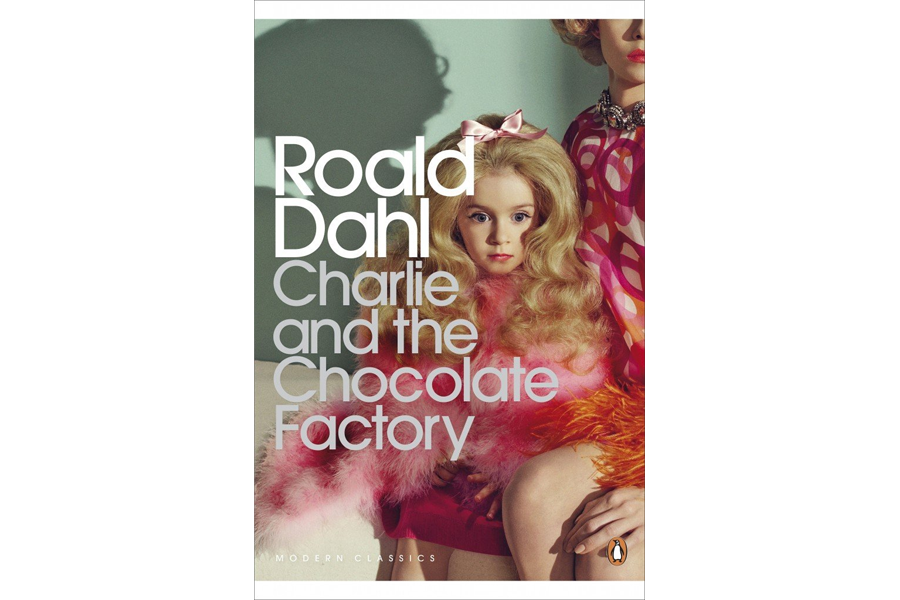Penguin defends 'creepy,' 'Lolita-esque' cover of 'Charlie and the Chocolate Factory'
Loading...
When Penguin Books posted a photo of a young, creepy, doll-like girl on their Facebook page, they asked their fans to guess what classic book's cover it would soon become attached to.
"We could give you a clue... but that would be worth more than a golden ticket," they hinted.
Even though the "golden ticket" clue clearly refers to "Charlie and the Chocolate Factory," many commenters thought it was a red herring, since the cover seemed completely at odds with the subject matter in a children's story. Many guessed instead that it was the cover for "Lolita" or "Valley of the Dolls."
When Penguin revealed that the cover was, in fact, for Roald Dahl's classic children's book, there was an instant social media backlash against Penguin's choice. Common complaints on Twitter and Facebook included the words "creepy" and "sexualized."
"Charlie and the Chocolate Factory" is the humorous story of Charlie Bucket, a good boy in a family with no money, who wins a visit to the greatest chocolate factory in the world by finding a "Golden Ticket" in a chocolate bar. The factory, owned by the mysterious and eccentric Willy Wonka, is full of magic and, of course, chocolate. The other children who find golden tickets are brats whose vices become their undoing.
Some readers wondered why the new cover did not include Charlie Bucket or Willy Wonka on the cover. Initially, it was thought that the cover must be a picture of either Violet Beauregarde or Veruca Salt – two of the bratty children in the story – but a spokeswoman from Penguin said this was not the case, according to the BBC.
On its Facebook page, Penguin said the picture was intended to represent the "children at the center of the story" while embracing Dahl's writing style, which encompasses "both the light and the dark aspects of life."
The new cover is part of Penguin's series of re-releases of classic books geared toward adults, called Penguin Modern Classics. According to Penguin's website, the books on the list "remain the very best, most provocative, exciting, groundbreaking, inspiring, revolutionary works of the last 100 years – an organic, ever-growing and ever-evolving list of books that we believe will continue to be read by generation after generation." Only a small handful of children's book have made the list, and they have all featured redesigns for a more adult audience.
Some thought this redesign went too far, however, including "Chocolat" author Joanne Harris, who tweeted, "I'm not sure why adults need a different cover anyway, but who was it who decided that 'adult' meant 'inappropriately sexualized'?"
Helen Conford, publishing director at Penguin Press, said the cover simply reflects the mature nature of the book.
“It’s a completely different style and there is a fantasy element here,” she said to the Bookseller. “We wanted something that spoke about the other qualities in the book…. it’s a children’s story that also steps outside children’s and people aren’t used to seeing Dahl in that way.”
In response to accusations that the child on the cover had been sexualized, she simply answered that she didn't see any sexualization herself.
The picture for the new cover is actually cropped from an article in Creative Review Magazine, which was published alongside a retro-style fashion story. The magazine was in favor of the new cover, saying "While the candy-colours hint at the sickly-sweetness of Willy Wonka's confection, of more significance is the unnerving quality of the image which touches on one of the main undercurrents in the book: the relationship between children and their parents, and what can happen when fame and fortune enter into their lives."
Even though the reaction on social media was largely negative, the cover did find some supporters who saw it as a bold artistic statement, embracing the famous edginess present in Dahl's work.
In a May interview with Parade, Luke Kelly, Roald Dahl's grandson and overseer of his estate, noted that the author was occasionally told by his publishers to rein in his dark humor at times for the sake of his audience of children.
"There was almost too much [darkness] sometimes, and it got taken out," Kelly reminisced. "I remember one of the lines that I love… I forget which kid it was, but one of the kids gets chopped up into vanilla fudge, or something like that, and I think the parent said, ‘He can’t be vanilla fudge. I’ve spent far too much on his education.’ It was such a brilliant line."
Love it or hate the controversial cover, it will not be the only new cover for "Charlie and the Chocolate Factory" coming out this year, which marks the 50th anniversary of the book's publication. According to the BBC, there will be two more traditional versions released this year, including a "Golden Edition" that will feature the famed 1995 Quentin Blake illustrations presented in full color.
Weston Williams is a Monitor contributor.








